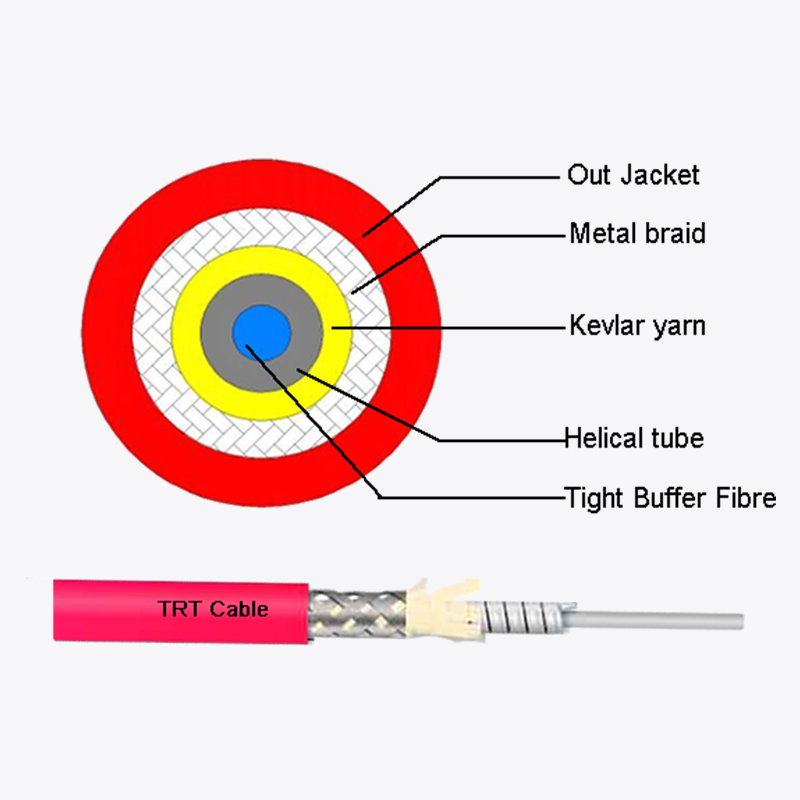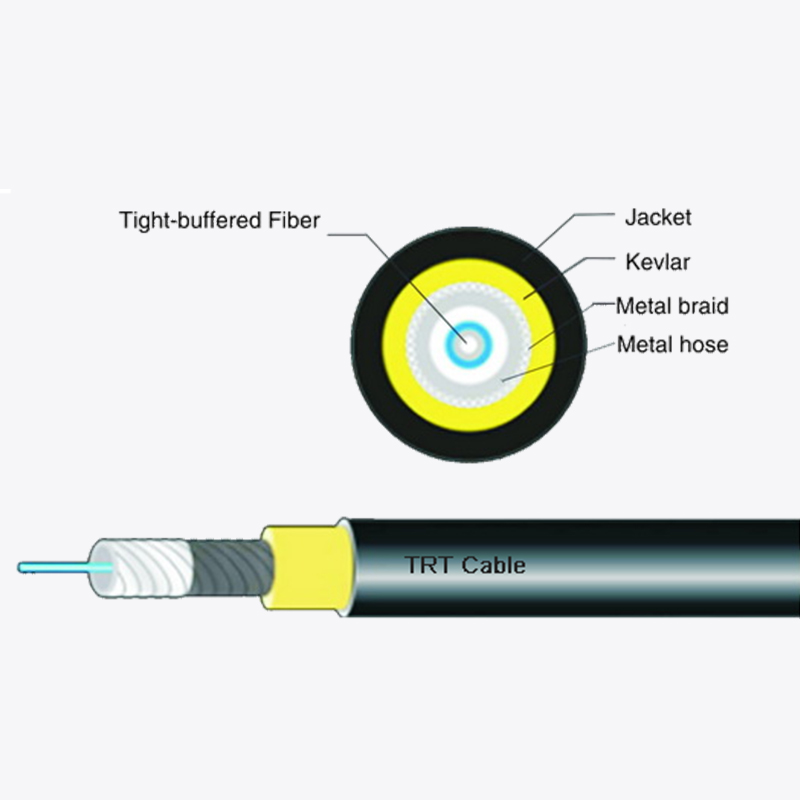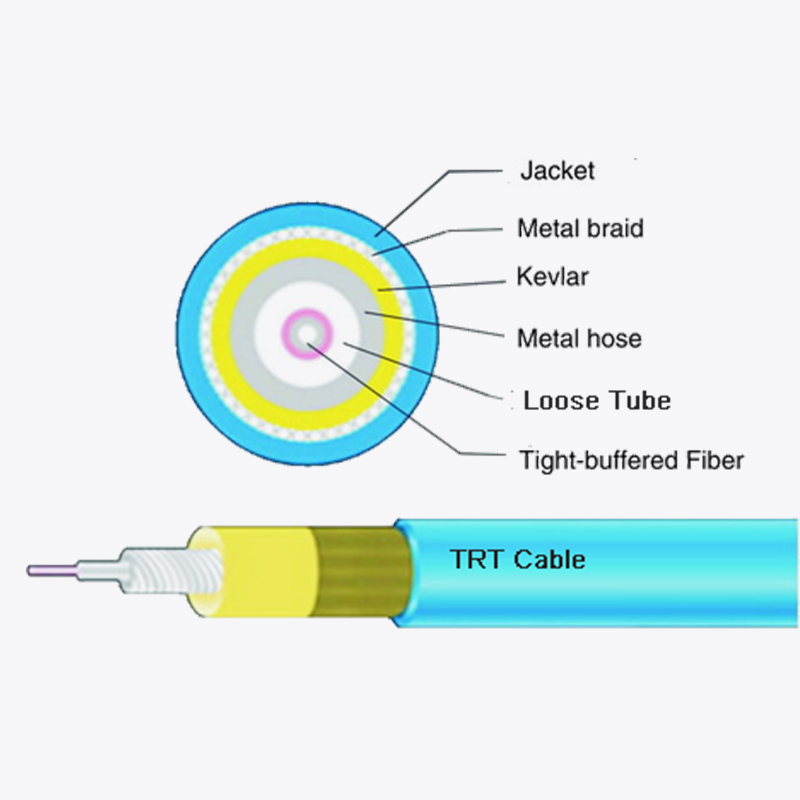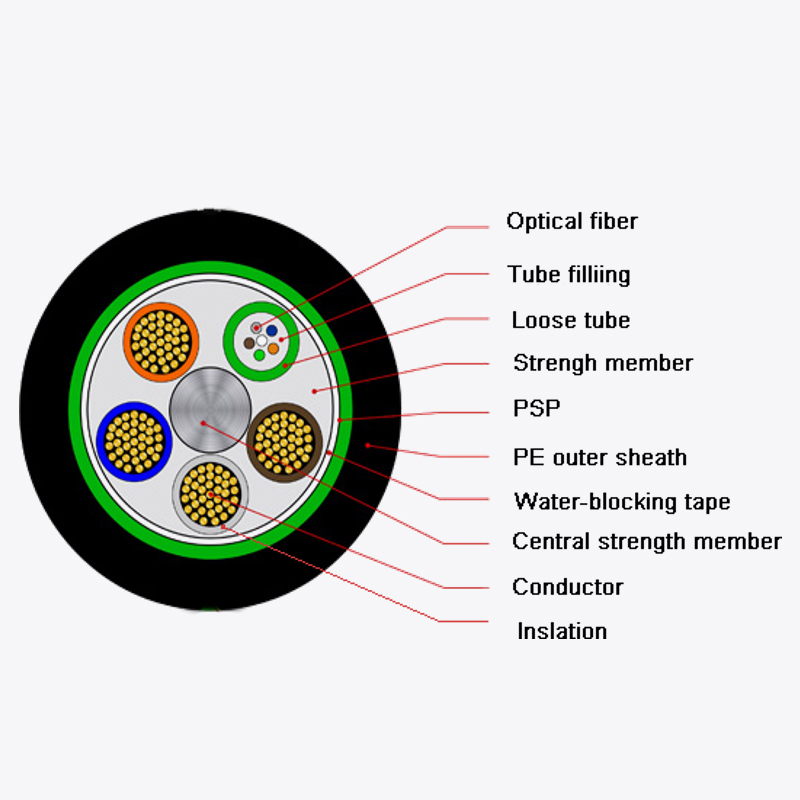Web Menu
Product Search
Exit Menu
Why is Tight Buffer the Preferred Choice for Indoor and Campus Backbone Links?
-1.png)
Why is Tight Buffer the Preferred Choice for Indoor and Campus Backbone Links?
In the intricate world of network infrastructure, the selection of the appropriate fiber optic cable is a critical decision that impacts performance, reliability, and total cost of ownership. Among the various designs available, one type consistently emerges as the frontrunner for specific, demanding applications: the tight buffer fiber optic cable. While other cable constructions like loose tube are ideal for long-haul outdoor runs, the unique attributes of tight buffer fiber optic cable make it the undisputed preferred choice for indoor environments and the connective tissue of campus backbone links.
Understanding the Fundamental Construction: Tight Buffer vs. Loose Tube
To appreciate why tight buffer fiber optic cable is so well-suited for certain applications, one must first understand its core design difference from its main alternative, loose tube cable.
A loose tube cable is designed primarily for external, outdoor environments. In this construction, the bare glass fiber is placed loosely within a hard plastic tube that is much larger in diameter than the fiber itself. This tube is often filled with a water-blocking gel that protects the fibers from moisture and allows them to move freely. This “free movement” is the key feature; it allows the cable to expand and contract with temperature fluctuations without stressing the fragile glass fiber, making it perfect for aerial, duct, and direct burial installations over long distances.
In stark contrast, a tight buffer fiber optic cable employs a fundamentally different approach. A thick, soft plastic coating, typically made of a material like PVC or LSZH (Low Smoke Zero Halogen), is extruded directly and tightly onto the glass fiber itself. This creates a dual-layer protection system: the primary coating applied during the fiber manufacturing process, and the secondary tight buffer layer. This results in a much more robust and larger diameter strand. Multiple tight buffered fibers are then often bundled together around a central strength member and enclosed in an overall jacket to form the final cable.
This direct, tight contact is what defines it. The fiber is not free to move; instead, the buffer layer is designed to absorb any mechanical stresses, protecting the delicate glass core and cladding within. This fundamental construction difference dictates the entire performance profile and ideal application scenarios for the tight buffer cable.
Key Advantages Driving Preference for Indoor and Campus Use
The design of tight buffer fiber optic cable confers a set of distinct advantages that align perfectly with the requirements of indoor and campus backbone installations.
Superior Mechanical Protection and Durability
The primary advantage of a tight buffer fiber optic cable is its exceptional toughness. The thick buffer layer provides superior resistance to crush loads, impact, and abrasion compared to a bare fiber or a gel-filled loose tube design. This is paramount in indoor environments where cables are routinely pulled through crowded conduits, dragged across concrete floors, or may be subject to accidental kicks or crushing by other equipment. The rugged nature of tight buffer construction significantly reduces the risk of installation damage and ensures long-term physical integrity, which is a critical factor for the reliability of network backbone links.
Enhanced Flexibility and Ease of Handling
The robust construction of a tight buffer fiber optic cable does not come at the expense of flexibility. In fact, these cables are remarkably flexible and easy to handle. This flexibility makes them far easier to route through the tight bends often encountered in data centers, wiring closets, and inside ceiling plenums. The minimum bend radius for tight buffer cables is typically more forgiving than for other types, allowing for neater and more compact cable management within racks and panels. This ease of handling translates directly into reduced installation time and labor costs, a significant consideration for any project budget.
Simplified Termination and Splicing
Perhaps the most significant operational advantage for installers is the ease of termination. Preparing a tight buffer fiber optic cable for a connector is a much simpler and cleaner process. The tight buffer material can be stripped off quickly and cleanly with standard tools, exposing the primary-coated fiber ready for connectorization. This eliminates the messy, time-consuming process of cleaning gel from loose tube fibers and the need for fan-out kits to manage individual fibers before termination. The simplicity of the process not only speeds up deployment but also reduces the potential for errors, ensuring more consistent and reliable connections. This is a major reason why it is the preferred fiber optic cable for data centers and other high-density patching environments.
Elimination of Water-Blocking Gel
The gel filling in loose tube cables, while excellent for outdoor moisture protection, is notoriously messy. It complicates termination, requires special cleaners, and can be a significant hassle in clean indoor environments like offices, labs, or data centers. A tight buffer fiber optic cable is typically a dry water-blocked or non-gel design. Moisture protection, if required for campus runs, is achieved through the use of water-swellable tapes or yarns within the cable structure. This results in a much cleaner and more user-friendly product for technicians working indoors.
Space Efficiency and Density
While an individual tight buffered fiber is larger than a bare fiber, cable designs can be very efficient. Tight buffered fibers can be stranded tightly together, allowing for a high fiber count in a relatively small overall cable diameter. This high fiber count and density are essential for backbone cables that must aggregate massive amounts of data traffic from throughout a building or campus. They allow more fibers to be routed through limited conduit space and connected efficiently within a patch panel.
Table: Core Advantages of Tight Buffer Fiber Optic Cable
| Advantage | Description | Benefit for Indoor/Campus Use |
|---|---|---|
| Mechanical Durability | Thick buffer layer protects against crushing, impact, and abrasion. | Withstands harsh pulls and indoor environmental hazards. |
| Flexibility | Maintains performance even with tight bends during routing. | Easier installation in confined spaces like conduits and racks. |
| Ease of Termination | Simple stripping process; no messy gel to clean. | Reduces installation time, cost, and potential for errors. |
| Dry Design | Uses dry water-blocking materials instead of gel. | Cleaner handling and termination, ideal for indoor spaces. |
| Direct Termination | Does not require a fan-out kit for connectorization. | Simplifies the parts list and installation procedure. |
Ideal Applications: Where Tight Buffer Excels
The advantages of tight buffer fiber optic cable are not theoretical; they directly translate into superior performance in specific, high-value applications.
Intra-Building Backbone (Riser and Plenum)
The vertical backbone that runs between floors of a single building—the riser—is a classic application for tight buffer fiber optic cable. Its riser rated jacket material is designed to prevent flame from propagating from one floor to another, as mandated by fire codes. The cable’s ruggedness ensures it can withstand the long, vertical pulls, and its flexibility helps in navigating elevator shafts and utility chases. Similarly, for cables run in air handling spaces (plenums), a plenum rated tight buffer cable with a special jacket that emits low smoke and no toxic halogenated gases is the mandatory and optimal choice. Its durability and safety compliance are unmatched in these life-safety-critical environments.
Campus Backbone Networks
A campus network connecting multiple buildings within a defined area, like a university, corporate park, or hospital complex, presents a unique challenge. These links are longer than typical in-building runs but shorter than telecom long-haul. They often require a cable that can be run underground in conduit but must then transition seamlessly indoors for termination. This is where a tight buffer fiber optic cable truly shines. Outdoor-rated tight buffer cables are available with UV-resistant, black polyethylene jackets for the exterior portion of the run. The key benefit is that the same fiber can be run directly indoors without a transition; the exterior jacket is simply stripped back at the building entry point, revealing the same familiar, easy-to-terminate tight buffered fibers inside. This eliminates the need for a splice point at the building entrance, reducing potential points of failure and saving considerable labor and hardware costs.
Data Center Applications
Within the data center, tight buffer fiber optic cable is ubiquitous for both intra-rack and inter-rack connectivity. The need for high fiber counts, extreme flexibility to manage cables in tight spaces, and the requirement for rapid, reliable termination make it the only logical choice. The ability to use pre-connectorized tight buffer cable assemblies further accelerates deployment and minimizes downtime in these critical environments. The durability of the cable also ensures it can withstand the constant re-patching and movement that occurs in a dynamic data center rack.
Industrial and Controlled Environments
Even in some industrial settings, particularly those that are controlled indoors like manufacturing clean rooms or automation labs, the durability and reliability of tight buffer construction are beneficial. While extremely harsh environments might require specialized armored cables, many industrial applications find that a robust tight buffer fiber optic cable provides sufficient protection against vibration, occasional impact, and chemical exposure, all while maintaining the ease of use expected in an indoor setting.
Important Considerations and Specifications
Selecting the right tight buffer fiber optic cable involves understanding key specifications beyond the basic construction type.
Jacket Ratings: The jacket material is critical for code compliance. Plenum (CMP) rated cable is for air handling spaces. Riser (CMR) rated is for vertical runs between floors. General purpose (CM) may be used in other areas. For campus outdoor runs, an outdoor rating is essential.
Fiber Type and Count: Tight buffer cables are available with both single-mode fiber and multimode fiber (OM3, OM4, OM5). The choice depends on the required transmission distance and bandwidth. Fiber counts can range from a few fibers to over 144, accommodating everything from a simple link to a massive backbone trunk.
Armored Options: For extra protection in particularly harsh indoor environments or for direct burial in campus settings without conduit, armored tight buffer cable is available. This features a helical corrugated steel tape underneath the outer jacket, providing exceptional resistance to rodent attack and crushing forces.
 Address:Zhong'an Road, Puzhuang Town, Suzhou City, Jiangsu Prov., China
Address:Zhong'an Road, Puzhuang Town, Suzhou City, Jiangsu Prov., China Phone:+86-189 1350 1815
Phone:+86-189 1350 1815 Tel:+86-512-66392923
Tel:+86-512-66392923 Fax:+86-512-66383830
Fax:+86-512-66383830 Email:[email protected]
Email:[email protected] Wechat: xiaobin18913501815
Wechat: xiaobin18913501815 whatsapp: +86 18913501815
whatsapp: +86 18913501815
 0
0

 English
English русский
русский Español
Español Português
Português عربى
عربى



